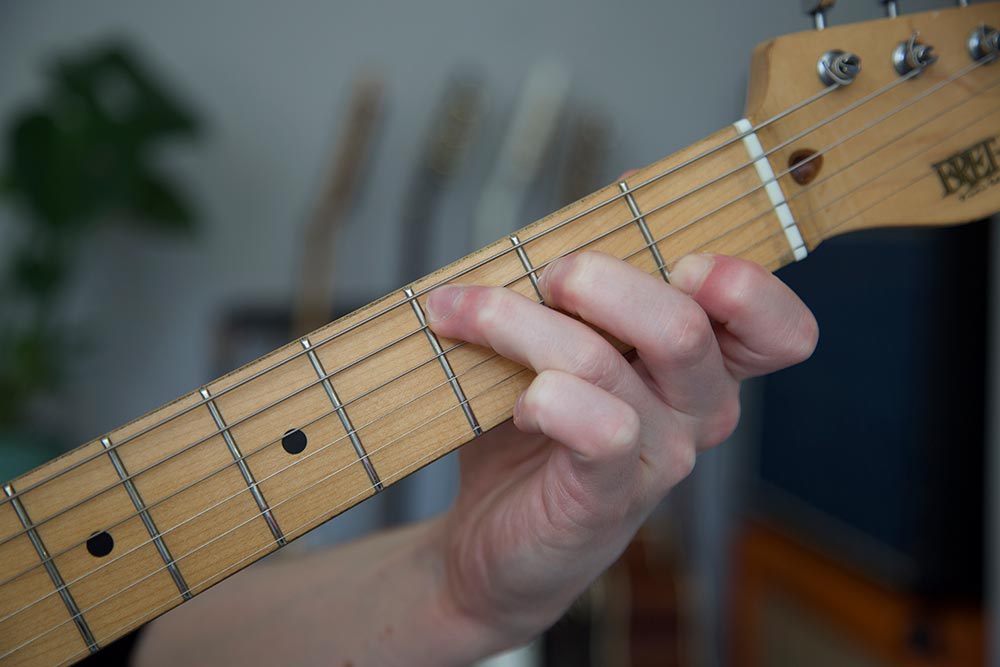
Chord Progressions
Essential Chord Progressions
Learning the most common chord progressions is key to recognising and playing music. While charts of these progressions can be found easily, it’s better to develop your ears and play by intuition rather than relying on printed material. Focus on the progressions that are most important to you, and try to identify them in the songs you listen to. With regular practice, you’ll be able to play and write music more intuitively.
Chord Progressions Essentials
There is a high probability that most of the songs you recognize are based on one of the following chord progressions. Although there are exceptions, knowing these progressions well can open up a multitude of playing possibilities.
I – IV – V Chord Progression
The I – IV – V progression, also referred to as the 12 bar blues, is a concise and straightforward three-chord progression. It works particularly well in songs with a call-and-response structure, but can be found in various genres such as blues, country, pop, rock or punk that have energetic tunes.
By mastering two chord shapes, you can play the I-IV-V progression in any key. This can be achieved by following the guidelines outlined in “Movable Chord Shapes.”
I-IV-V Chord Progressions
Some popular songs that use the I-IV-V progression include:
- In the key of G: (G, C, D) – “I Love Rock n’ Roll,” “Twist And Shout,” “Fortunate Son,” “Early Morning Rain”
- In the key of A: (A, D, E) – “Stir It Up” “Twenty Flight Rock,” “Blue Moon Of Kentucky,” “Louie Louie,”
If you search for three-chord songs, you will have an endless supply of pieces to play.
The I V vi IV Chord Progression – The Popular Pop Song Progression
The I V vi IV chord progression is a commonly used progression in contemporary pop music. It is frequently used in songs that narrate a story and can be played on a repeating loop. Some popular examples of songs that use this progression include “Don’t Stop Believin” by Journey and “Someone Like You” by Adele, which both use the chords C, G, Am and F.
Variations of this progression can also be created by rearranging the order of chords, resulting in different feelings in the music. For example, arranging the chords as vi-IV-I-V gives songs like “Zombie” by the Cranberries, “Apologize” by OneRepublic, and “Cheap Thrills” by Sia. A classic example is “San Francisco (Be Sure to Wear Flowers in Your Hair)” by Scott McKenzie, which uses the progression Em-C-G-D and can be played with a folky strum pattern on an acoustic guitar.
I-vi-IV-V chord progression
The I-vi-IV-V chord progression, also known as the “50s chord progression,” is a common chord sequence that is often used in popular music. It has a strong association with the 1950s era and is characterised by a upbeat, nostalgic sound. Some of the most well-known songs that use this progression include “Stand By Me” by Ben E. King and other classic hits from the 1950s. The chords typically used in this progression are the tonic (I), subdominant (IV), and dominant (V) chords, along with the relative minor (vi) chord. This progression can be easily transposed to different keys and is a popular choice for many songwriters due to its versatility and ability to evoke a timeless, classic sound.
ii – V – I chord progression
The ii – V – I chord progression is widely recognized as a staple in jazz music. It is used to create harmonic interest and to modulate between different keys. The progression consists of three chords, the ii chord, the V chord, and the I chord. The ii-V-I is a popular way of establishing a tonal center and adding structure to a piece of music.
The ii-V-I progression is not limited to jazz, however. It can be found in other genres, such as pop, rock, and classical. One example of a pop song that uses the ii-V-I is “From Me to You” by the Beatles. During the middle-eight section of the song, the key changes using a ii-V-I progression, and then returns to the original key using the ii-V-I again almost immediately.
The ii-V-I progression can be used in several different ways. It can be used as a standalone progression to create a satisfying sound, or as a transition to a new key. It is also commonly used as a turnaround in a song. When played in different keys, the ii-V-I progression can create a sense of movement and progression, making it a versatile and important tool for musicians to know.
Learning chord progressions is an important part of any musician’s journey. By being mindful of chord progressions and incorporating them into your practice time, you can develop a deeper understanding of music and start to recognize where a song is going by feel. It’s recommended to start by learning each of these progressions in the most popular keys, which are C, G, D, A, and E. Using movable chord shapes and quick patterns can help you identify chords quickly in different keys.
To dive deeper into chord progressions, you can check out resources such as “Exploring Common Chord Progressions” from the LGA website. Understanding chord progressions can seem intimidating at first, but with practice and persistence, you’ll be able to use them to create beautiful and expressive music.








